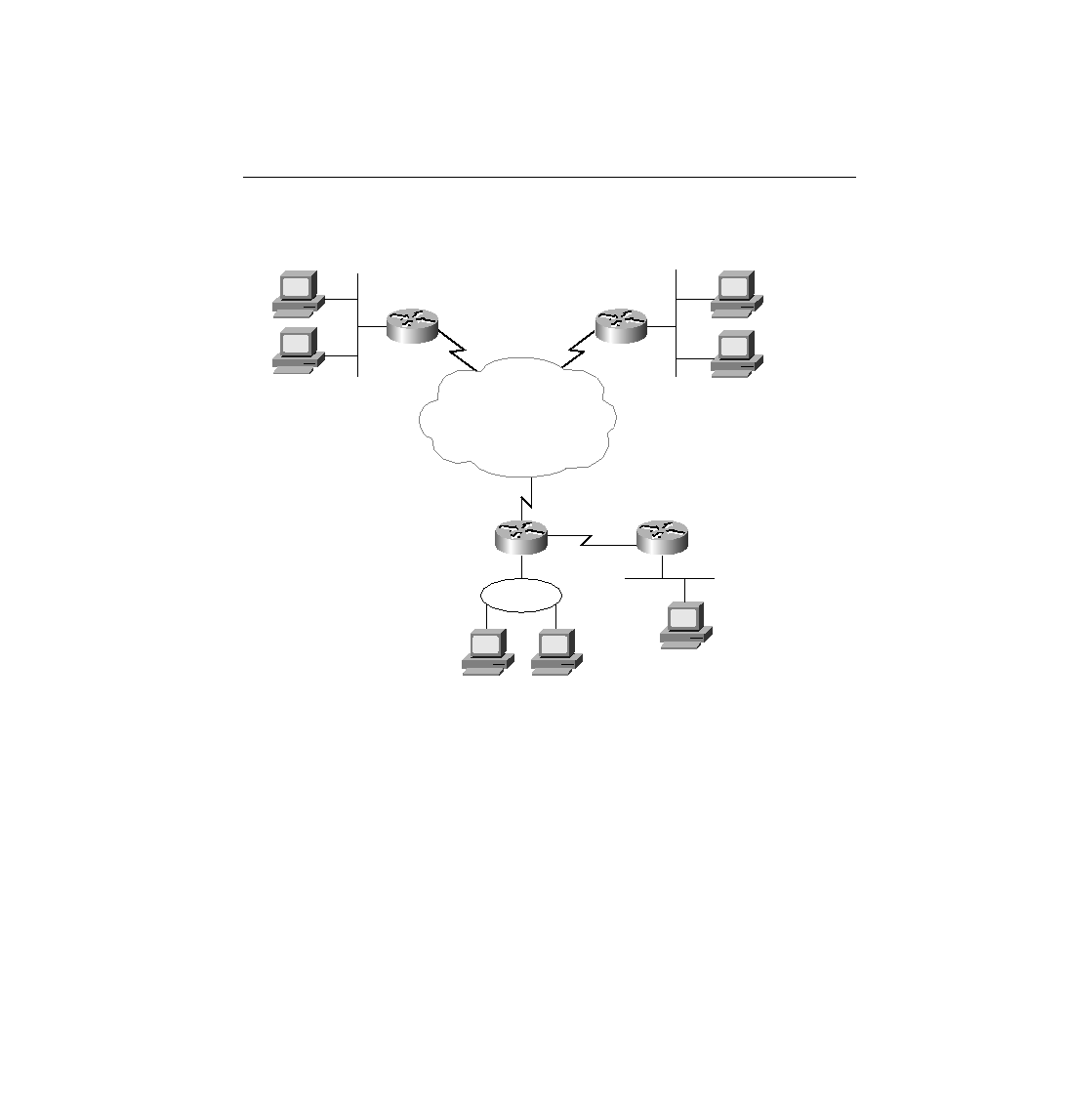
IP Addressing and Subnetting 243
Figure 5-21
Using Subnets
A review of some basic concepts relating to networks without subnetting can be used as a
comparison to networks with subnetting. When not subnetting, the default mask defines the
number of host bits. The mask accomplishes this by simply using binary 0 for each bit position
in the mask that corresponds to the host part of the address in question. For example, the mask
255.255.0.0 (Class B) has a value of all binary 0s in the last 16 bits. This implies 16 host bits at
the end of the address. The following list summarizes basic concepts when not using subnetting:
·
The mask defines the number of host bits in the host part of an address.
·
Class A, B, and C rules define the number of network bits in the network part of the
address.
·
Without subnetting, these two fields (network and host) compose the entire 32-bit address.
·
Each host address in the network has the same value in the network part of the address.
150.150.1.0
150.150.2.0
150.150.2.1
150.150.2.2
150.150.6.0
150.150.4.0
150.150.3.0
Sioux Falls
Atlanta
Vinnie
Snellville
A
C
D
Barnesville
Frame
Relay
150.150.5.0
B
Ray
Fay
Kris
150.150.4.2
Wendell
Matt
JoJo
ch05.fm Page 243 Monday, March 20, 2000 5:06 PM
